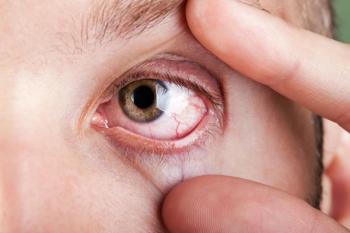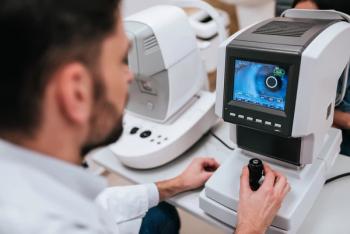At the 2025 ARVO conference in Salt Lake City, Mark Bullimore, MCOptom, PhD, of the University of Houston College of Optometry shared a compelling critique of the current use of centile growth curves for axial length in myopia management. Speaking directly to optometrists, Bullimore emphasized the need for more accurate, condition-specific tools in evaluating myopic eye growth and treatment efficacy.
The problem with conventional growth curves
Key takeaways for optometrists:
- Centile growth curves based on general populations are misleading in myopia management.
- Myopia-specific axial length data provides a more accurate tool for monitoring progression and treatment efficacy.
- Cycloplegic refractive error remains the most reliable predictor of myopia onset—not axial length alone.
- For clinical relevance, axial elongation benchmarks should exclude emmetropic and hyperopic children.
Centile growth curves—long used in pediatrics to track height and weight—are increasingly being applied to axial length measurements in children. According to Bullimore, this is where the utility of these curves begins and ends in the context of myopia.
"These curves are based on data from all children, not just myopic ones," he explained. "So they substantially underestimate axial elongation in myopic children."
This limitation has 2 major consequences:
- Poor predictive value: The curves fail to reflect how fast a myopic child's eye is likely to elongate.
- Ineffective assessment tool: They hinder clinicians from accurately determining whether myopia control treatments are working.
Bullimore also cautioned against relying on axial length alone to predict myopia onset. While it has some predictive value, "cycloplegic refractive error is far more accurate," he said.
A better approach: Myopia-specific data
To manage myopia effectively, Bullimore recommends using data derived solely from myopic children. This would allow practitioners to assess the expected axial elongation in untreated cases and compare it meaningfully against treated ones.
“What you want is to know how quickly the average untreated myopic child’s eye will grow,” he said. “And ideally, you’d have confidence intervals or centile ranges specific to that population.”
By separating myopic from nonmyopic data, clinicians can gain a more realistic benchmark and better evaluate the success of interventions like orthokeratology or low-dose atropine.
Final thoughts
Bullimore’s insights at ARVO underscore the importance of precision in pediatric myopia care. As the prevalence of childhood myopia continues to rise, refining the tools we use to monitor progression and assess treatment outcomes is more critical than ever.














































